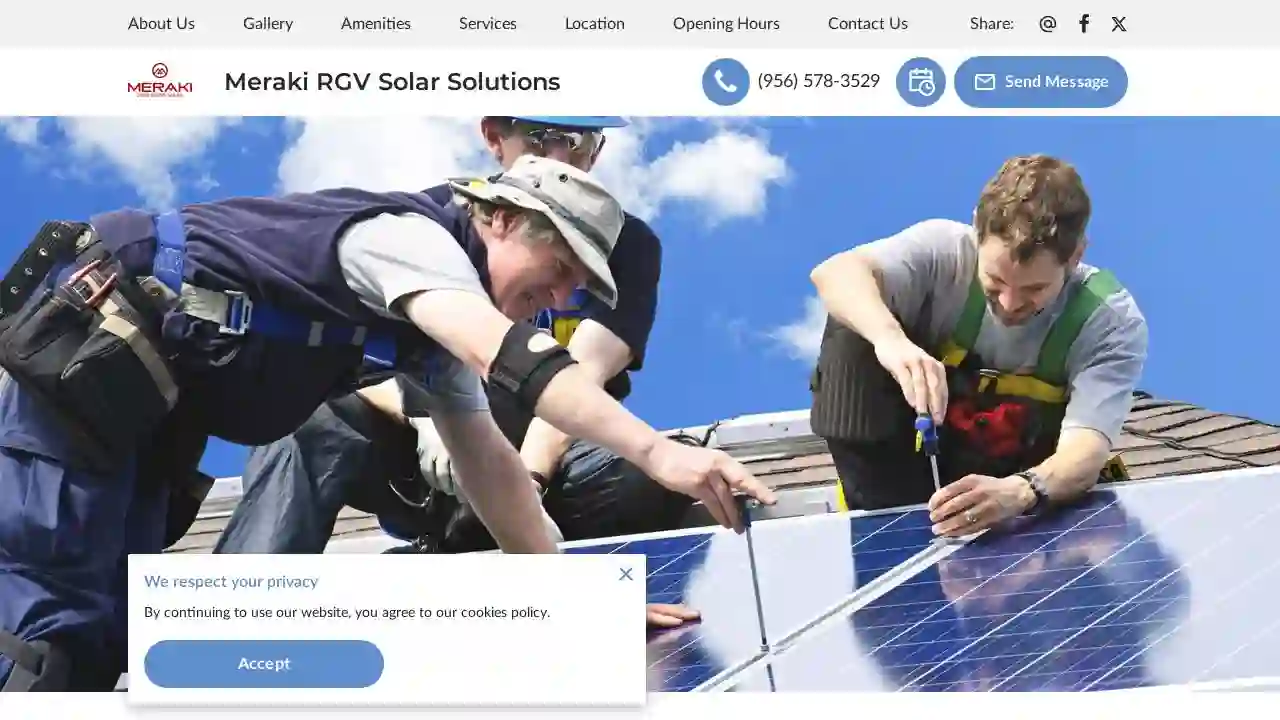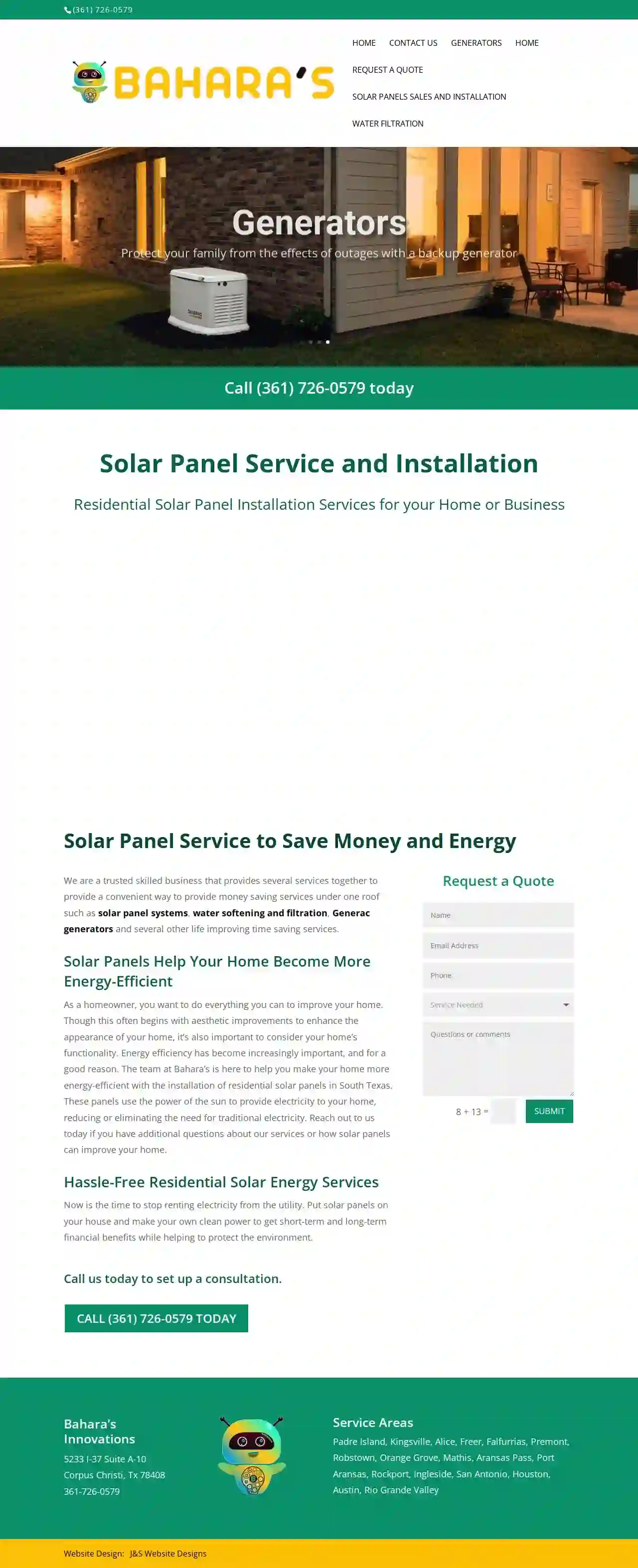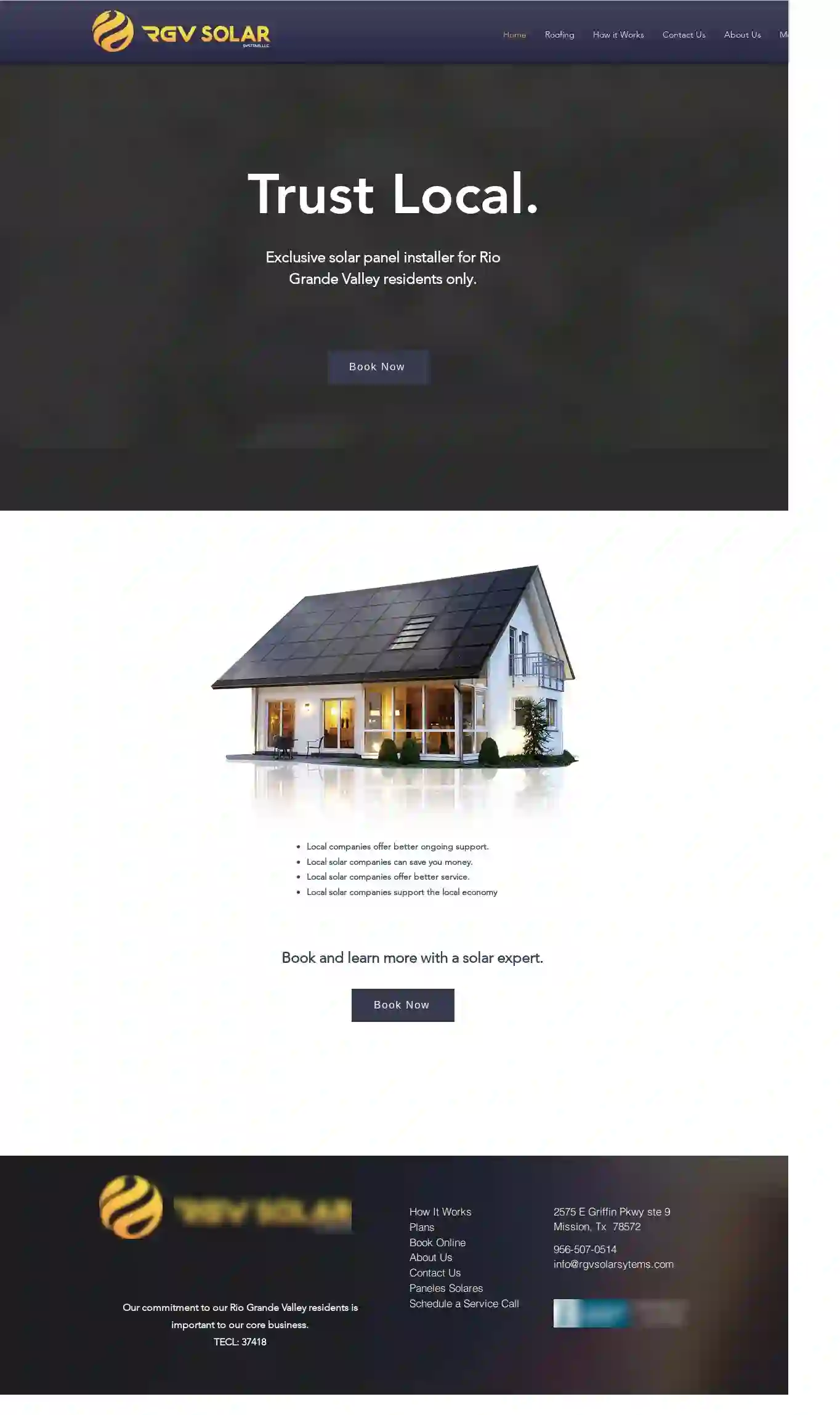Solar Installers Marble Falls
Top Solar Installation Company in Marble Falls
Get 3 FREE Solar Energy Companies quotes for your project today! Compare profiles, reviews, accreditations, portfolio, etc... and choose the best deal.

KW Solar
4.625 reviews5750 N Sam Houston Pkwy E #810, Houston, 77032, USWe deliver clean, free energy from the sun to our fellow man, all across Texas and the Gulf Coast.
- Services
- Why Us?
- Accreditations
- Our Team
- Testimonials
- Gallery
Get Quote
Meraki RGV Solar Solutions
5281 N 23rd Street, McAllen, 78504, USForemost Renewable Energy Installation Service in McAllen. At Meraki Solutions, you'll get the right installation services for all types of renewable power sources for business and home usage. Our self-motivated and skilled specialists take pride in providing customers with top-quality equipment and a quick renewable energy installation.
- Services
- Why Us?
- Accreditations
- Gallery
Get Quote
Alba Energy
4.850 reviews123 Solar Way, Suite 100, Austin, 78701, USAlba Energy is a trusted, in-house team that takes care of everything from start to finish. They offer sustainable energy solutions, decreasing dependency on fossil fuels, and provide a cleaner planet for all. Their team is dedicated to providing the best solar energy solutions for homeowners and businesses.
- Services
- Why Us?
- Accreditations
- Our Team
- Testimonials
- Gallery
Get Quote
APsystems North America
3.38 reviews8627 N. Mopac Expy, Ste 150, Austin, 78759, USAPsystems is the #1 global leader in multi-platform MLPE solutions for the solar PV industry. Our product line includes microinverters, energy storage, and rapid shutdown devices, all designed to help you get the most out of your solar investment. Our microinverters are intelligent, innovative, and the best-selling multi-module microinverters in the world, providing reliable and efficient power conversion for your solar panels.
- Services
- Why Us?
- Accreditations
- Our Team
- Testimonials
- Gallery
Get Quote
South Plains Solar
31 reviewsSuite 105-A, N/A, 2550 114th Street, Grand Prairie, 75050, USSouth Plains Solar is a premier solar solution in Texas, offering a range of services including residential and commercial solar installations, electrical services, and general electrical repair. With a focus on sustainability and renewable energy, the company aims to provide customers with a cost-effective and environmentally friendly solution to their energy needs. By converting to solar, customers can save up to $100/month on their electric bill and enjoy low maintenance costs, improved grid security, and a sustainable source of energy.
- Services
- Why Us?
- Accreditations
- Our Team
- Testimonials
- Gallery
Get Quote
Premium Solar Patios
475 reviews10840 Sanden Dr. STE A, Dallas, TX 75238, 75238, USPremium Solar Patios is a leading distributor of innovative solar solutions designed for residential customers. Our mission is to provide American homeowners with an accessible opportunity to embrace sustainable living. We offer custom Solar Patios, American Made Mission Solar panels, and Solar Pergolas & Carports. Our services aim to help you make your dreams a solar reality.
- Services
- Why Us?
- Accreditations
- Our Team
- Testimonials
- Gallery
Get Quote
Bahara’s Innovations
5233 I-37 Suite A-10, Corpus Christi, 78408, USBahara's Innovations is a trusted skilled business that provides several services together to provide a convenient way to provide money saving services under one roof such as solar panel systems, water softening and filtration, Generac generators and several other life improving time saving services. They are committed to providing the best customer service to meet your home improvement needs.
- Services
- Why Us?
- Accreditations
- Our Team
- Testimonials
- Gallery
Get Quote
RGV Solar
4.785 reviews2575 E Griffin Pkwy ste 9, Mission, 78572, USRGV Solar Systems is a local company dedicated to providing exclusive solar panel installation services to Rio Grande Valley residents. They emphasize the importance of choosing a local company for better ongoing support, cost savings, improved service, and supporting the local economy. Their commitment to the community is reflected in their core business values.
- Services
- Why Us?
- Accreditations
- Gallery
Get Quote
Sundown solar llc
San Antonio, Texas, 78201, USSundown Solar is a company born from a vision of freedom and independence, aiming to revolutionize off-grid living. Founded by two visionary partners with expertise in electrical and solar technologies, they provide sustainable and reliable energy solutions to empower homeowners and adventurers alike.
- Services
- Why Us?
- Our Team
- Gallery
Get Quote
Solar Panels Texas Installers Austin
20333 TX-249 Suite 200, Houston, 77070, USTexas Solar Group is a leading provider of solar panel installations, Tesla Powerwall battery backup, and roofing services. With a team of experienced solar panel installers, consultants, and engineers, they offer solutions tailored to each customer's unique situation, budget, and energy needs. Their team has completed over 7680 installations, producing over 94GWh of energy and saving customers over $72M to date.
- Services
- Why Us?
- Accreditations
- Gallery
Get Quote
Over 4,210+ Solar Businesses onboarded
Our solar pros operate in Marble Falls and beyond!
SolarCompaniesHub has curated and vetted Top Solar Installers near Marble Falls. Find the most trustworthy pro today.
Frequently Asked Questions About Solar Installers
- Analyze your energy bills
- Assess your roof's suitability
- Calculate your potential solar energy generation
- Recommend a system size that meets your needs and goals.
- System size (measured in kilowatts, or kW)
- Type of solar panels (monocrystalline, polycrystalline, thin-film)
- Roof complexity (pitch, size, obstructions)
- Labor costs in your area
- Available incentives and rebates
What is net metering, and how does it work?
Do solar panels increase my home value?
How do I choose the right solar panel system size for my needs?
What is the average cost of solar panel installation in USA?
What is net metering, and how does it work?
Do solar panels increase my home value?
How do I choose the right solar panel system size for my needs?
- Analyze your energy bills
- Assess your roof's suitability
- Calculate your potential solar energy generation
- Recommend a system size that meets your needs and goals.
What is the average cost of solar panel installation in USA?
- System size (measured in kilowatts, or kW)
- Type of solar panels (monocrystalline, polycrystalline, thin-film)
- Roof complexity (pitch, size, obstructions)
- Labor costs in your area
- Available incentives and rebates